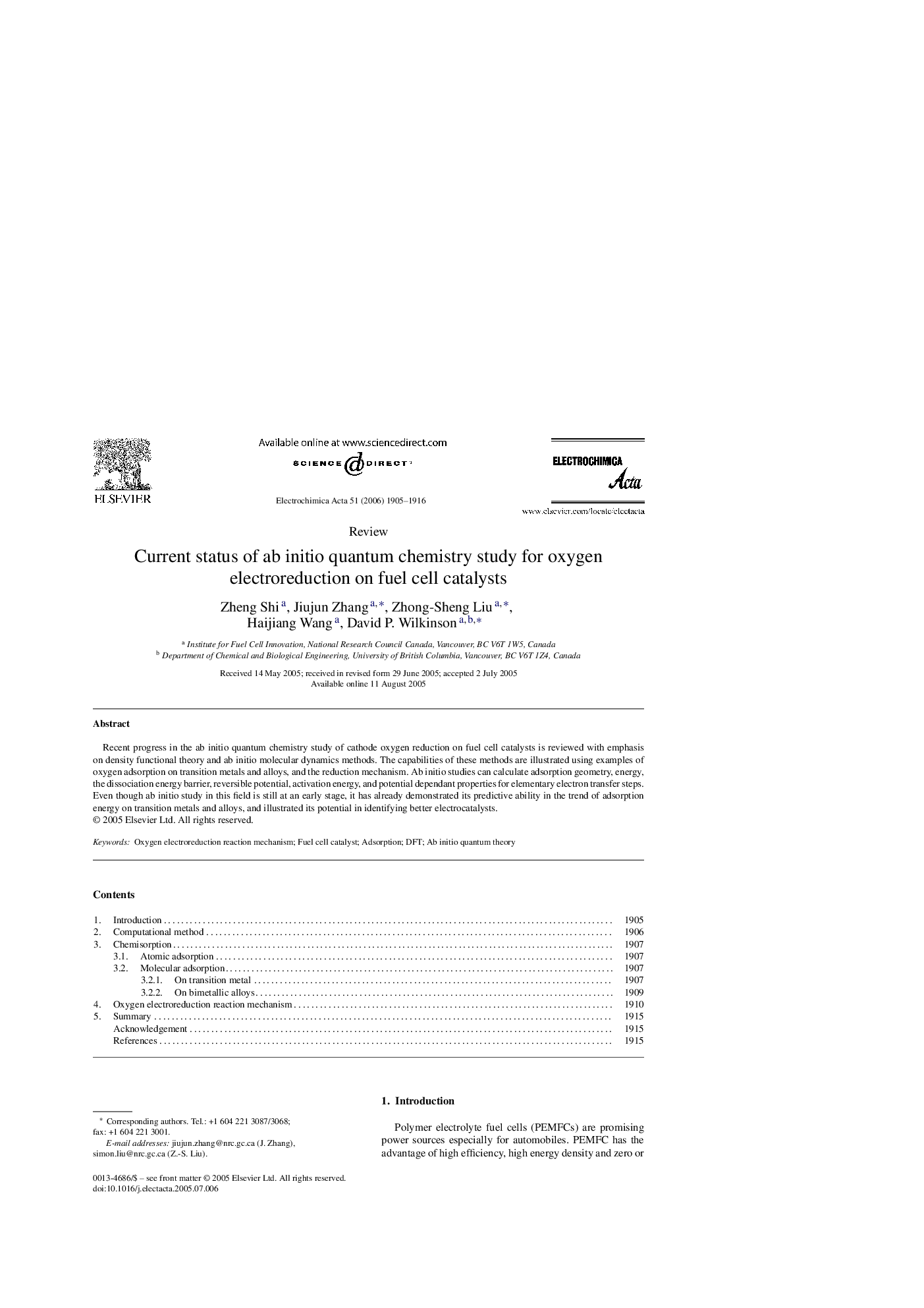| Article ID | Journal | Published Year | Pages | File Type |
|---|---|---|---|---|
| 196846 | Electrochimica Acta | 2006 | 12 Pages |
Recent progress in the ab initio quantum chemistry study of cathode oxygen reduction on fuel cell catalysts is reviewed with emphasis on density functional theory and ab initio molecular dynamics methods. The capabilities of these methods are illustrated using examples of oxygen adsorption on transition metals and alloys, and the reduction mechanism. Ab initio studies can calculate adsorption geometry, energy, the dissociation energy barrier, reversible potential, activation energy, and potential dependant properties for elementary electron transfer steps. Even though ab initio study in this field is still at an early stage, it has already demonstrated its predictive ability in the trend of adsorption energy on transition metals and alloys, and illustrated its potential in identifying better electrocatalysts.
